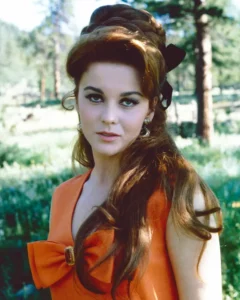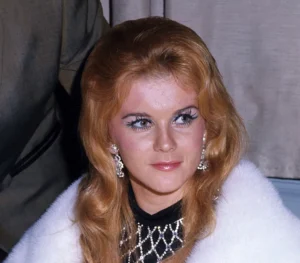If I asked you to name the strongest animal on Earth, you’d probably think of something huge and powerful like an elephant, lion, or even a bear, right? But what if I told you there’s an animal smaller than a grain of sand that can put all these mighty creatures to shame? Sounds unbelievable, doesn’t it? Well, believe it or not, it’s absolutely true! Meet the oribatid mite—a microscopic powerhouse that lifts loads that would crush even the strongest humans.
Let’s dive deeper into this tiny yet incredibly strong creature and discover exactly how it manages such amazing feats.
Meet the World’s Strongest Animal: The Oribatid Mite

Oribatid mites aren’t exactly celebrities in the animal kingdom. You probably haven’t even heard of them before today. These tiny creatures weigh less than 25 micrograms—that’s smaller and lighter than the grains of sand you casually brush off your hands at the beach. Yet, despite their minuscule size, oribatid mites pack a muscular punch that’s simply extraordinary.
Scientists have observed these microscopic creatures lifting objects up to 1,180 times their own body weight. To put this into perspective, imagine if you could lift a massive cargo ship or about 82 tons. Sounds impossible, doesn’t it? But that’s exactly the kind of strength oribatid mites exhibit daily. It’s an awe-inspiring example of nature’s hidden wonders.
Why Are Oribatid Mites So Amazingly Strong?
You might wonder, how is it even possible for something so tiny to achieve strength on this superhuman level? Well, it all boils down to some fascinating biology and physics working hand-in-hand.
Video : Meet the Tiny Mite That’s Stronger Than Superman
Incredible Muscle-to-Body Ratio
One reason oribatid mites are freakishly strong is due to their unique muscle-to-body-weight ratio. Because they don’t have heavy internal skeletons like humans or elephants, their bodies can pack in a higher percentage of pure muscle. Think of it this way: imagine a weightlifter who’s all muscle and no extra fat—that’s essentially what an oribatid mite is like, just on an incredibly microscopic scale.
The Advantage of Their Small Size
Additionally, their tiny size contributes massively to their strength. Oribatid mites have a large surface-area-to-volume ratio. This ratio allows their muscles to operate more efficiently with significantly less energy waste. Simply put, their small muscles expend far less energy moving their lightweight bodies around. The result? Extra strength to spare for lifting and carrying heavier objects.
No Internal Skeleton Means Less Weight, More Strength
Here’s another fascinating fact: oribatid mites, like most insects and arthropods, possess an external skeleton (exoskeleton) rather than internal bones. This exoskeleton provides strength and protection without the heaviness associated with internal bones. Less internal weight means more muscle space, translating directly into incredible lifting power.
Habitat and Life of the Mighty Oribatid Mite
Now, you might be curious—where exactly do these tiny champions live? Surprisingly, oribatid mites are incredibly common. In fact, they dominate many forest floors and soil ecosystems worldwide. Hidden among decaying leaves, organic matter, and damp soil, oribatid mites quietly play essential roles in maintaining ecological balance.

Beneficial Contributions to Ecosystems
Oribatids aren’t just impressive weightlifters—they’re environmental heroes too. These mites actively improve soil quality by aiding seed dispersal, breaking down organic matter, and controlling populations of harmful parasites and insect pathogens. By keeping soils healthy, they indirectly support plant growth, animal health, and even human agriculture.
Slow Growth but Long Evolutionary History
Despite their impressive strength, oribatid mites live life at a leisurely pace. They have low metabolic rates, grow slowly, and take anywhere from a few months to two full years to mature from egg to adulthood. Interestingly, their life cycle is remarkably complex, going through six distinct developmental stages—pre-larval, larval, three pupal stages, and finally adulthood.
And here’s something even more incredible: these tiny mites have likely roamed Earth’s soils for 300 to 400 million years. That means oribatids have outlasted dinosaurs, ice ages, and countless other species, quietly thriving and evolving beneath our feet.
What Can We Learn from Oribatid Mites?
Beyond their awe-inspiring strength and resilience, oribatid mites offer us powerful lessons about adaptation and efficiency. They demonstrate vividly that size doesn’t always correlate with power or importance. Their success in nature results from perfect adaptations to their environment, optimized anatomy, and the efficiency of their muscles.
Video : Oribatid mite (Acari: Cryptostigmata) from soil at Ibaraki Prefecture, Japan
Think about it—what if humans could mimic even a fraction of this efficiency? We’re always looking to build stronger yet lighter materials, more powerful yet smaller machinery. The oribatid mite, tiny as it is, might just provide inspiration for future advancements in technology, engineering, and biomechanics.
Conclusion: Celebrating the Tiny Giant of the Animal World
So, the next time you think about powerful creatures, don’t limit yourself to elephants, gorillas, or lions. Remember the astonishing oribatid mite, a tiny animal no bigger than a grain of sand, capable of lifting unimaginable weight relative to its body size.
These mites remind us vividly that power isn’t always about size or strength that you can easily see. Sometimes, real strength is hidden in the smallest creatures on Earth, patiently living beneath our notice. Isn’t that fascinating? Nature truly never stops surprising us.
From their exceptional strength to their important ecological roles, oribatid mites are remarkable creatures deserving more recognition. Let’s celebrate these tiny yet powerful champions that teach us valuable lessons about strength, efficiency, and adaptation.
Next time you stroll through a forest, take a moment to consider the microscopic miracles happening beneath your feet—you just might be walking above the strongest animals on the planet!
At 83, This Star’s Stunning Transformation After Facial Surgery Will Leave You Speechless
At 83, this legendary star remains as vibrant as ever. After a dangerous fall in her early 30s that required facial surgery, she’s still living life to the fullest — even riding a lavender Harley. Her story is one of resilience, transformation, and an unshakeable love for life.
Over the years, she has secured her place in entertainment history. While other stars from her time have slowed down, she has continued moving forward in every possible way. However, beneath her graceful appearance lies a powerful tale of survival.

Defying expectations, she continues to thrive well into her 80s. Long before her resilience became known, the star had already captivated audiences in the ’60s with her beauty and charm. Let’s take a look at how she shone in her early years.
The legendary star was stunning in the 1960s and 1970s. She dazzled on screen, winning hearts with her performances.

The Accident That Almost Changed Everything
In September 1972, disaster struck during what should have been another fantastic performance. Just before she was set to go on stage at a Lake Tahoe casino, she fell 22 feet from a platform, hitting the ground hard.
The impact caused multiple facial fractures, a broken jaw, a concussion, and a broken arm. Witnesses said it was a terrifying scene, and many feared her dancing career was over, but thankfully, her knee was not injured.

She was rushed to U.C.L.A. Medical Center, where doctors worked for three hours to fix the damage to her face. The surgery was successful, but many wondered if she would return to her former glory.
The actress was famous for her beauty and talent, and with her severe injuries, some thought this might be the end of her time in the spotlight. But rather than retreat, she faced this challenge head-on.

Private Battles and Public Victories
She didn’t just return to the spotlight after recovering — she thrived. The surgery did not stop her career, and she quickly proved everyone wrong about her future in show business. By 1973, she was back in action, playing Mrs. Lowe in “The Train Robbers.”
Her work after the accident made her a versatile performer. By 1975, she earned two Oscar nominations. In the 1980s, she received six Emmy nominations, showing her talent went far beyond her early days as a sex symbol.

While her career flourished, her personal life faced challenges. In 1985, she shared her struggles with infertility. Despite trying various treatments, she and her husband, Roger Smith, could not have children of their own.
The couple raised Smith’s three children from a previous marriage, but she still hoped for a child, believing that whatever was meant to be would be. She often quoted the serenity prayer, asking for peace to accept what she could not change.
Even while dealing with these personal issues, she continued to shine in public. In the 1990s, she remained a star, proving her lasting appeal.

A Reserved Star in the Spotlight: The 2001 Interview
By 2001, she had spent four decades captivating audiences with her talents, yet she remained reserved. In an interview with The Washington Post, she kept the conversation brief.

After just 25 minutes, she ended the session, politely saying, “That’s enough. Don’t you think that’s enough?” Although she didn’t want to say much, her long career spoke for itself. She had made a name for herself across movies, nightclubs, television, and live performances.
Throughout the years, she faced injuries, depression, alcoholism, and infertility but continued to be a survivor. Reinvention was part of her career, reflecting her resilience. Her reserved nature, linked to her Swedish upbringing, made her private about certain topics.
She kept her personal life guarded, especially regarding her rumored relationship with Elvis Presley. Friends noted that she shut down when that topic was brought up.
While she was private about her life, she loved talking about animals and her passion for motorcycles. At the time of the interview, she was touring in a 45-city production of “The Best Little Whorehouse in Texas,” even after suffering injuries in a motorcycle accident the year before.
Although her patience with the media was limited, her stunning green eyes showed her passion and drive. She preferred to keep parts of her life private.

A Life of Speed and Grace in Her 80s
Now in her 80s, Ann-Margret shows no signs of slowing down. Earlier this year, at the Women’s Image Network’s 25th Awards in February 2024, she received the Living Legend Award. In her speech, she reflected on her life and expressed gratitude for the unexpected blessings.
“I am so blessed. I just can’t believe all the things that have happened to me,” Ann-Margret said. Even at her age, she remains vibrant and energetic, especially with her love for speed.
At the event, she proudly shared that she still rides her lavender Harley Davidson, decorated with white daisies. “I love the speed,” she said with a smile.
Ann-Margret’s reflections were full of life, showing that while she may take moments to reflect, she is not done living life to the fullest. From her rise to fame to her more recent joys, she embraces every opportunity that comes her way.
Fans continue to admire her beauty and grace, with comments like “A timeless beauty ,” “Beautiful lady now and always,” and “Still a beautiful, lovely & classy lady!♥️.”
As she rides through life, both literally and figuratively, Ann-Margret inspires many with her strength and passion. From her early days as a Hollywood star to her ongoing journey at 83, she shows that beauty, grace, and talent do not fade with time.



Leave a Reply